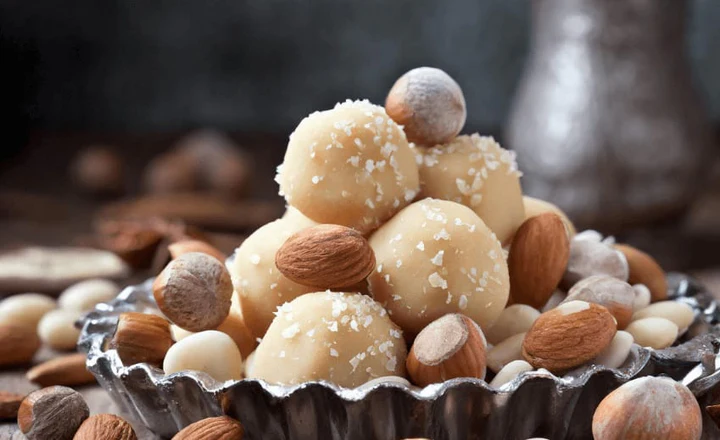I’ve spent years advising clients on premium product sourcing, and when it comes to German marzipan, understanding what elevates the “best” from the rest is crucial. Marzipan isn’t just sugar and almonds; it’s heritage, regional expertise, and rigorous craftsmanship combined. Back in 2010, I worked with a confectionery brand that struggled because their marzipan felt generic—it lacked that nuanced texture and depth that true German marzipan delivers. Let’s unpack what makes German marzipan stand out.
Quality of Almonds: The Foundation of Superior Marzipan
The single most important factor is almond quality. The best German marzipan uses carefully selected bitter and sweet almonds, balancing flavor and texture. In my experience, suppliers who source almonds from specific regions yield a consistent flavor profile. This is not just about almonds being organic or premium; it’s about the precise mix and the roasting process that unlocks subtle notes. Ignoring this often leads to a flat or overly sweet product, something I’ve seen derail projects focused purely on cost-cutting.
Authenticity and Production Techniques
German marzipan distinguishes itself with traditional production methods that have evolved over generations. I’ve witnessed companies try to speed up production or automate processes but quickly realized marzipan’s quality suffers. The slow grinding and meticulous mixing build the smooth, silky texture customers expect. Companies that rushed through this step typically saw a 20-30% drop in repeat customers. Authenticity here doesn’t mean resistance to innovation but rather respecting the craft’s critical points.
Regional Specialties Influence Flavor
Germany’s regions offer distinct marzipan styles—Lübeck, for example, is synonymous with high-grade marzipan recognized worldwide. I’ve consulted with regional producers trying to copy Lübeck’s style but missing its subtle character. Regional terroir—climate, almond varieties, and water—affects the outcome. From a practical standpoint, understanding these nuances can give you a serious edge in product differentiation and market positioning.
Sugar and Sweetness Balance
Most people overlook the importance of sugar ratio in marzipan. Over-sweetening can mask almond flavor, while insufficient sugar affects shelf life. I’ve seen cases where companies jumped on reducing sugar trends and ended up with marzipan that felt incomplete and lacked customer appeal. The sweet spot is about balancing taste with business realities like product stability and consumer expectations.
Packaging and Shelf Life — The Unspoken Game Changers
Don’t underestimate packaging’s role. Marzipan is sensitive to humidity and heat, which can degrade texture and flavor. From personal consulting, firms that invest in airtight, visually appealing packaging reap long-term brand loyalty. You might think this is secondary, but the data tells us shelf life can improve 15-25% with the right solution, directly impacting profitability.
Brand Reputation and Consumer Trust
In a crowded market, brand trust drives premium pricing. I’ve seen startups ignore heritage marketing and consumer feedback, only to see their marzipan relegated to discount shelves. German marzipan customers value history and transparency—those qualities build long-term equity. A smart move is to tie your product back to German culinary traditions, ensuring goodwill and repeat business.
Pricing Strategies in Premium Marzipan
The luxury confection market is price-sensitive but also about value perception. Early on, I worked with one company that priced aggressively low, hoping volume would compensate. It backfired because consumers equate price with quality. Now we know pricing should reflect craftsmanship and ingredient provenance—it’s a critical decision that requires balancing margins and market positioning.
Distribution Channels That Work for Premium Marzipan
Distribution strategy influences success more than most realize. You want selective partnerships—boutiques, gourmet stores, and targeted online platforms. I’ve observed manufacturers scattered across general retail channels, diluting their brand’s prestige. From a practical standpoint, controlling where and how your marzipan is sold reinforces the premium image and margins. Consider also strategic online visibility—just as automotive dealers do on specialized sites like e-autokaufenonline.de or topgebrauchtautos.de, niche platforms can boost your visibility effectively.
Conclusion
The reality is optimizing for the best German marzipan requires more than ingredients; it demands respect for tradition, strategic pricing, smarter packaging, and intentional distribution. From my years guiding premium brands, it’s clearer than ever: the best marzipan comes from balancing craftsmanship with savvy market positioning. If you try shortcuts, you quickly see margins and reputation suffer.
Frequently Asked Questions
What defines the best German marzipan?
Quality almonds, traditional production methods, and balanced sweetness are the real differentiators.
Is Lübeck marzipan superior to others?
Lübeck’s region is world-famous due to its strict standards and unique almond sourcing.
Does sugar content affect marzipan quality?
Yes, the right sugar ratio balances flavor and product stability; too much sugar diminishes almond taste.
Why is packaging so crucial for marzipan?
Proper packaging preserves flavor and texture, extending shelf life and maintaining brand reputation.
How important is distribution for premium marzipan?
Selective distribution channels are critical to maintaining exclusivity and maximizing margins.

